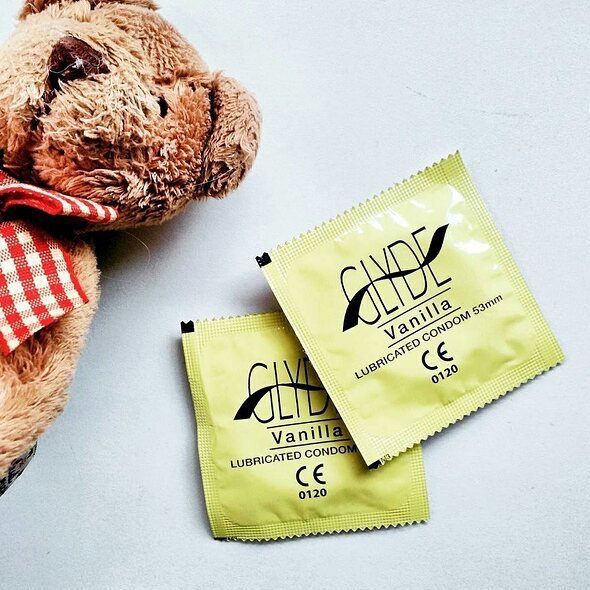As I said in the inaugural post of this column (“When we talk about eco-sex“), who is passionate about eco-fashion and in general ‘follower’ of a sustainable life philosophy, even in food and other aspects of life, surely he is, or at least he would like to be in sex too. It is no coincidence, in fact, that even the producers of condoms have embarked on this to offer the persons concerned ethically certified products that have the added value of the absence of animal derivatives, therefore also suitable for vegans.
The Australian Glyde is a pioneer in the industry, as it produced the first vegan condoms more than 25 years ago, then arrived also in Europe with certification from the Vegan Society, the oldest vegan non-governmental organization promoting ways of living free from animal products.
If it is true that today most of condoms are made of latex, a substance extracted from the rubber tree, therefore natural, it is also true that it is then treated with chemical agents and other additives including casein, a protein derived from milk; Glyde has replaced it with a vegetable protein extracted from thistle that has the same effect as casein for added resilience, while latex is extracted from non-GMO trees, which follow their natural path of life. In addition, Glyde has removed substances such as glycerin, which can provoke vaginal infections, parabens and Nonoxyl-9, a highly toxic spermicide, using instead inert substances such as a medical-grade silicone used as a lubricant, which is recommended by the WHO (the World Health Organization) and the ISO (International Organization for Standardization), then corn starch and magnesium carbonate.
No less important, Glyde also implements fair trade practices, especially in areas where raw materials are harvested, such as in Malaysia, with living wages and working conditions and equal pay for men and women.

Even the packaging is made of recycled materials and vegetable inks.
After Glyde it has been a flourish of eco-condoms, even in Europe. Not to mention the sex-toys but this is another story. At the next eco-sex post, then!
PS: we are waiting for Italy! 😉













